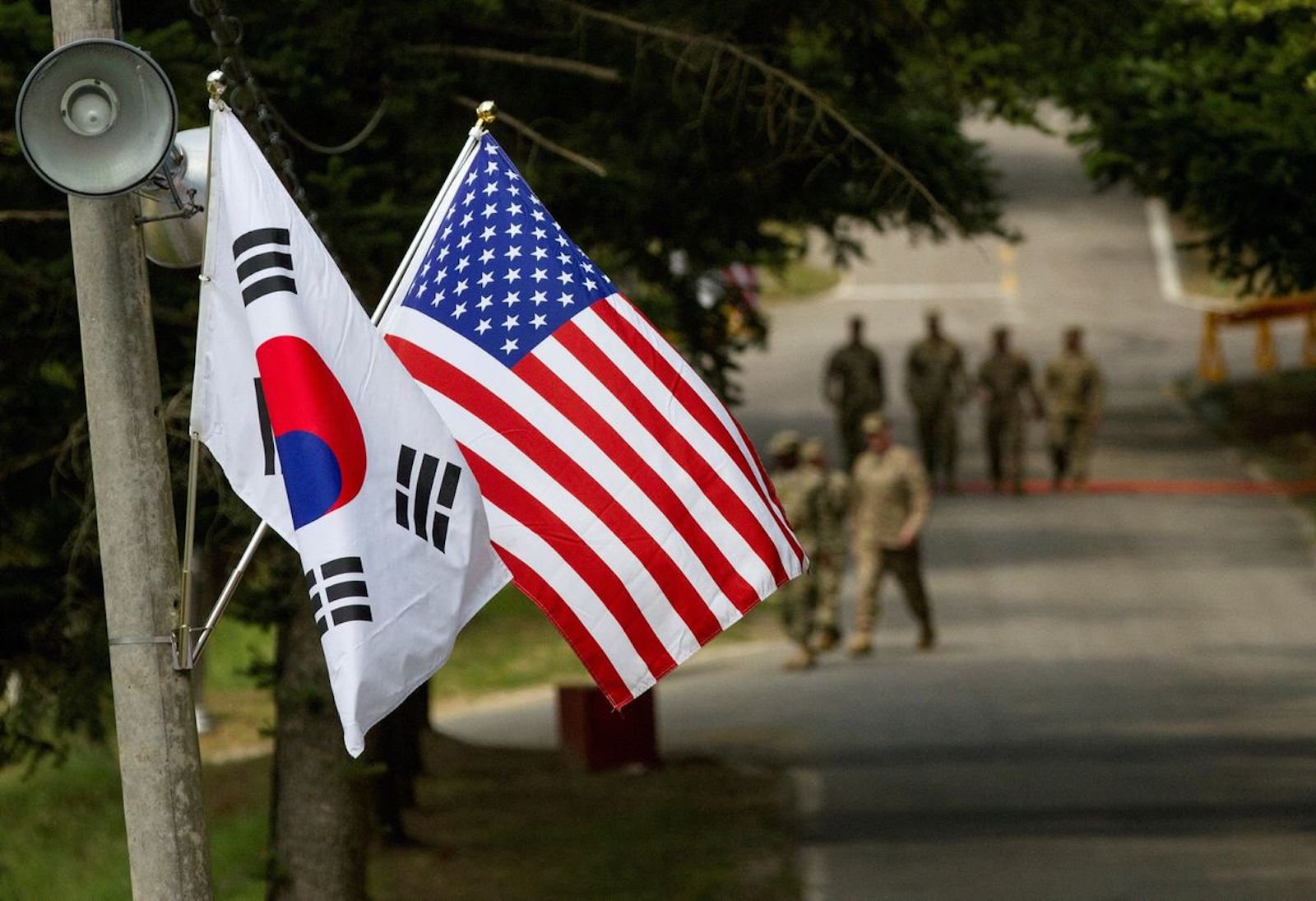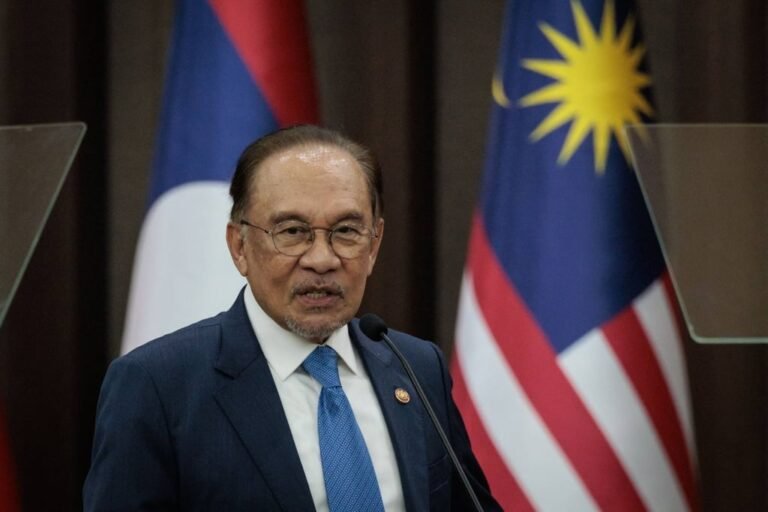Curtains for the US-Korea military alliance?
The US–Korea military alliance, forged in the crucible of the Cold War, has long been regarded as one of the most resilient and indispensable pillars of East Asian security. Since the signing of the Mutual Defense Treaty in 1953, the alliance has not only deterred war on the Korean Peninsula but also anchored America’s strategic…
The US–Korea military alliance, forged in the crucible of the Cold War, has long been regarded as one of the most resilient and indispensable pillars of East Asian security.
Since the signing of the Mutual Defense Treaty in 1953, the alliance has not only deterred war on the Korean Peninsula but also anchored America’s strategic posture in Northeast Asia. Yet recent political developments in both Washington and Seoul raise the sobering question of whether the alliance is nearing a historic inflection point.
South Korean President Lee Jae-myung’s Armed Forces Day speech, delivered with all the symbolic weight such an occasion demands, reaffirmed the “solidity” of the alliance with Washington.
But embedded within his rhetoric was a powerful subtext: a call for South Korea to build a strong, self-reliant military capable of standing on its own in a volatile region. In hindsight, Lee’s words may be remembered as the beginning of the gradual unraveling of a partnership that has defined East Asian security for more than seven decades.
The Trump shock
At the heart of this emerging transition lies the shifting nature of US foreign policy under President Donald Trump’s “America First” agenda. For decades, Washington presented itself as a consistent and reliable security guarantor.
But Trump’s transactional approach to alliances – marked by tariffs, repeated threats to withdraw US troops and demands for dramatically higher host-nation support – has shaken confidence in America’s staying power.
In Seoul, anxiety is growing that Washington may one day downsize its 28,500-strong troop presence or dilute its commitment to the “nuclear umbrella” that deters North Korean aggression.
Unlike its northern adversary, South Korea lacks nuclear weapons and has depended for generations on the credibility of US extended deterrence. However, the perception that Washington’s resolve is increasingly contingent on financial contributions and its global competition with China has eroded public trust.
For many South Koreans, Trump’s approach marks a stark departure from the alliance’s founding principles of mutual sacrifice and shared security, introducing an element of doubt that may prove difficult to overcome.
Stressed alliance
The constraints facing Seoul go well beyond trade and North Korea. On issue after issue, Washington has pressed South Korea in ways that suggest an alliance increasingly skewed toward US strategic and economic interests, with little regard for Seoul’s domestic and security dilemmas.
Washington’s insistence on sharply increasing Seoul’s financial contributions to maintain US forces in Korea has been a major flashpoint. Demands as high as $10 billion annually have been floated, a figure that would impose a crushing burden on an economy projected to grow less than 1% this year.
US officials cite NATO’s 5% of GDP benchmark for defense spending as precedent. Yet this comparison ignores the vastly different geopolitical and economic realities South Korea faces. For Washington, the imperative is to cut costs and extract more from allies; for Seoul, it is a question of economic sustainability.
Another contentious issue is Washington’s push for “strategic flexibility” – the right to redeploy US forces stationed in Korea to other theaters, such as Taiwan or the South China Sea. For South Koreans, this raises profound sovereignty concerns and risks entangling the nation in conflicts unrelated to its core security interests.
The possibility of being drawn into a Taiwan crisis is particularly alarming, given that China is one of South Korea’s largest trading partners and holds direct leverage over North Korea. If South Korea were dragged into a military confrontation with Beijing, the peninsula could once again become the frontline of a much larger regional conflict.
The 2015 bilateral nuclear energy agreement, which bars Seoul from enriching uranium or reprocessing spent fuel, has also become a point of contention. South Korea has quietly pushed greater autonomy over its nuclear energy program, citing concerns over energy security and the pursuit of technological advancement.
Yet US resistance remains firm, even as North Korea has become a fully fledged nuclear power. Washington’s unwillingness to accommodate Seoul’s legitimate energy needs is perceived by many Koreans as hypocritical and patronizing – unbecoming of an equal partnership.
Trade relations between the two allies remain fraught. Washington continues to press Seoul for trade concessions, demanding greater Korean investments in the United States, expanded market access for American firms, tighter intellectual property protections and limits on South Korea’s industrial subsidies.
If fully met, including a Trump demand for $350 billion worth of Korean investments in the US, could weaken Seoul’s competitiveness amid structural stagnation, widening inequality and demographic decline. For many in Seoul, this pattern reinforces the perception that the alliance has become a vehicle for advancing Washington’s agenda at Korea’s expense.
Taken together, these pressures illustrate the narrowing policy space available to Seoul under the current alliance framework.
Turn toward autonomy
President Lee’s call for greater self-reliance is significant. His announcement of an 8.2% increase in defense spending, raising the budget to 66.3 trillion won ($47.1 billion) and prioritizing AI-driven combat systems, autonomous drones and precision-guided missiles, conveys not just ambition but strategic necessity.
Lee’s declaration that South Korea must “not depend on anyone else but strengthen our own power” is a clear articulation of strategic autonomy – a goal long pursued by Korean leaders but consistently constrained by reliance on American protection. By emphasizing indigenous capabilities, Seoul is positioning itself for a future in which external guarantees may no longer be dependable.
Equally consequential is Lee’s push to complete the long-discussed transfer of wartime operational control (OPCON) from the US commander to a Korean-led joint command. While often portrayed in Washington as a technical matter, for South Koreans it is a profound question of sovereignty.
The symbolism of reclaiming wartime command authority – after decades of foreign control – cannot be overstated. For critics, OPCON transfer risks undermining deterrence. For supporters, it represents the maturation of the Korean state into a fully sovereign power.
The contradiction at the heart of the alliance is now starkly apparent. Both Trump and Lee speak of maintaining a “solid” alliance, yet their actions chart divergent trajectories.
Trump seeks to reduce US entanglements and shift burdens onto allies, while Lee seeks to reclaim sovereignty and avoid overdependence. Ironically, though driven by different motivations, their policies converge in practice: a gradual loosening of the alliance masked by the rhetoric of solidarity.
This dynamic raises profound questions about the future: Will the alliance evolve into a looser partnership focused on coordination rather than command?
Will South Korea’s pursuit of self-reliance clash irreparably with US efforts to integrate Korean forces into its Indo-Pacific strategy against China? Or will the two nations reconcile sovereignty with solidarity, redefining the alliance for a new era?
A more unsettling possibility is that mounting stress within the alliance could eventually push South Korea to consider the unthinkable – distancing itself from Washington and, under certain conditions, moving closer to Beijing’s strategic orbit.
The long goodbye?
It would be premature to declare the US–Korea alliance dead. The two nations still share vital interests, from deterring North Korea to maintaining stability in East Asia.
The alliance’s institutional architecture – joint exercises, intelligence-sharing and defense-industrial cooperation – remains robust. Moreover, the presence of nearly 30,000 American troops on South Korean soil is not easily dismantled.
Yet history may record this moment as the start of a deliberate transition – from dependency to autonomy, from unquestioned alliance to pragmatic partnership.
Facing demographic decline, economic stagnation and mounting security pressures, South Korea can no longer afford to stake its survival entirely on the reliability of a partner whose priorities are increasingly elsewhere.
President Lee’s words captured both the challenge and the aspiration: “Solid combined defense capability and posture will not only bring peace and stability to the Korean Peninsula but also contribute to the region’s stability and shared prosperity.”
The critical question now is what “solid” truly means: continued reliance on the United States, or the consolidation of an independent Korean power capable of shaping its own destiny. All signs increasingly point to the latter.
An era of independent Korean military power – capable not only of defending its own borders but also of assuming a more prominent role in regional security – is on the horizon.
Regional actors such as Japan, India and Australia would do well to take note of these underlying shifts in Korean strategic thinking and adjust their policies accordingly, as the emergence of a more autonomous South Korea is likely to reshape the Indo-Pacific’s security architecture.
For decades, the alliance was the anchor of South Korea’s survival. Today, it may be the constraint that prevents Seoul from realizing its full potential as a sovereign actor.
The beginning of the end of the US–Korea military alliance is not about rupture or betrayal. It is about evolution – an alliance gradually yielding to autonomy, and a nation preparing, at last, to stand on its own.







